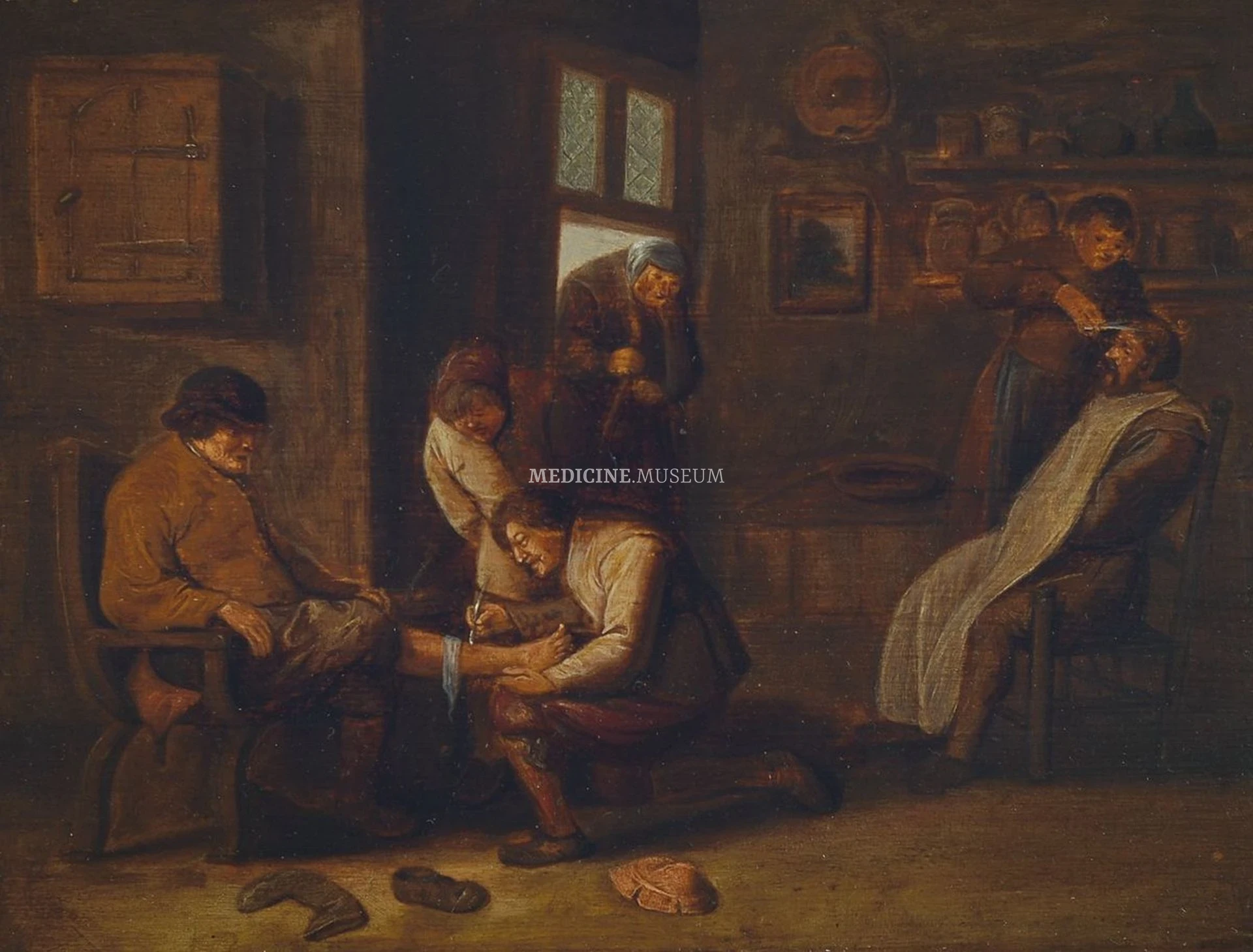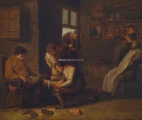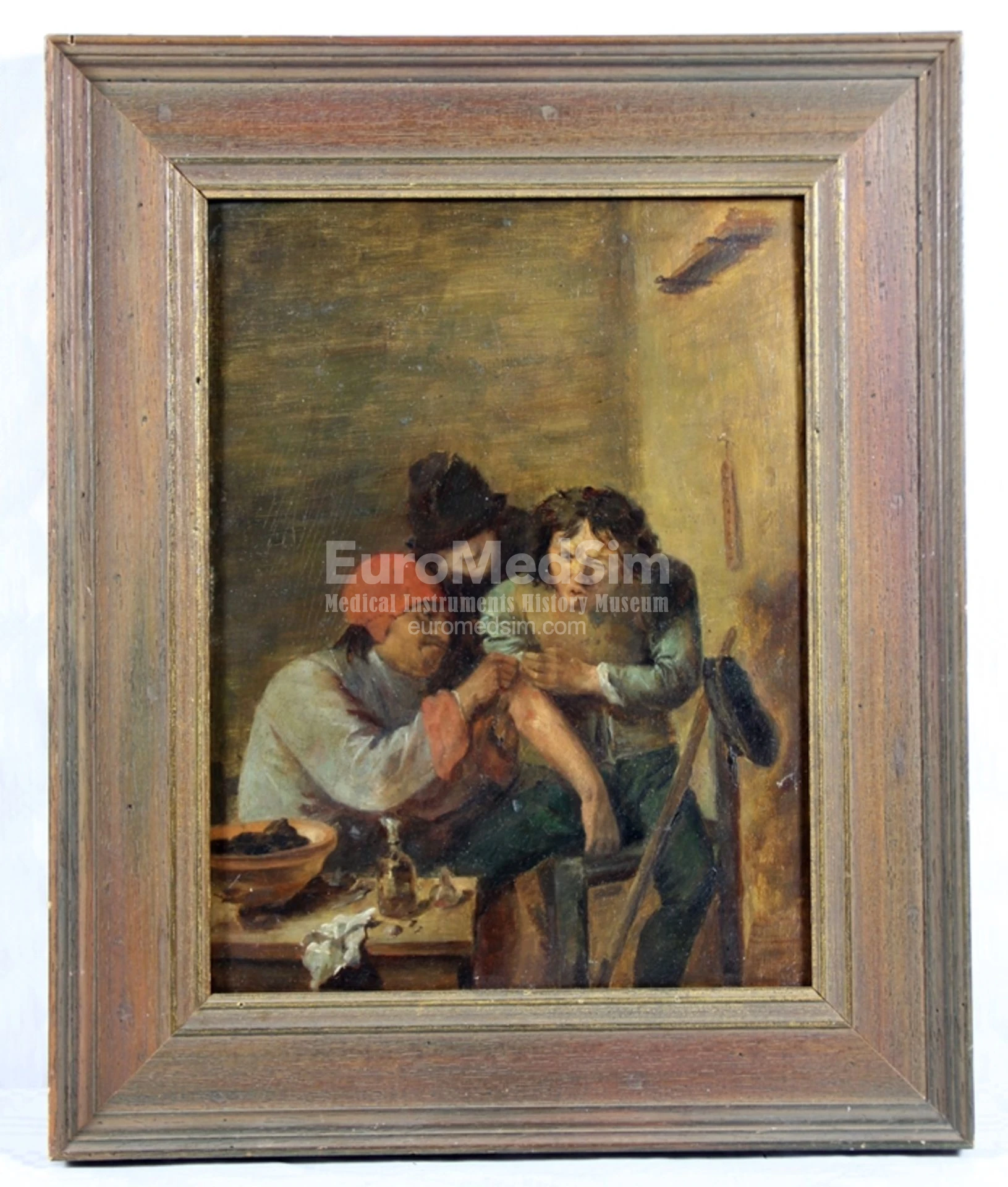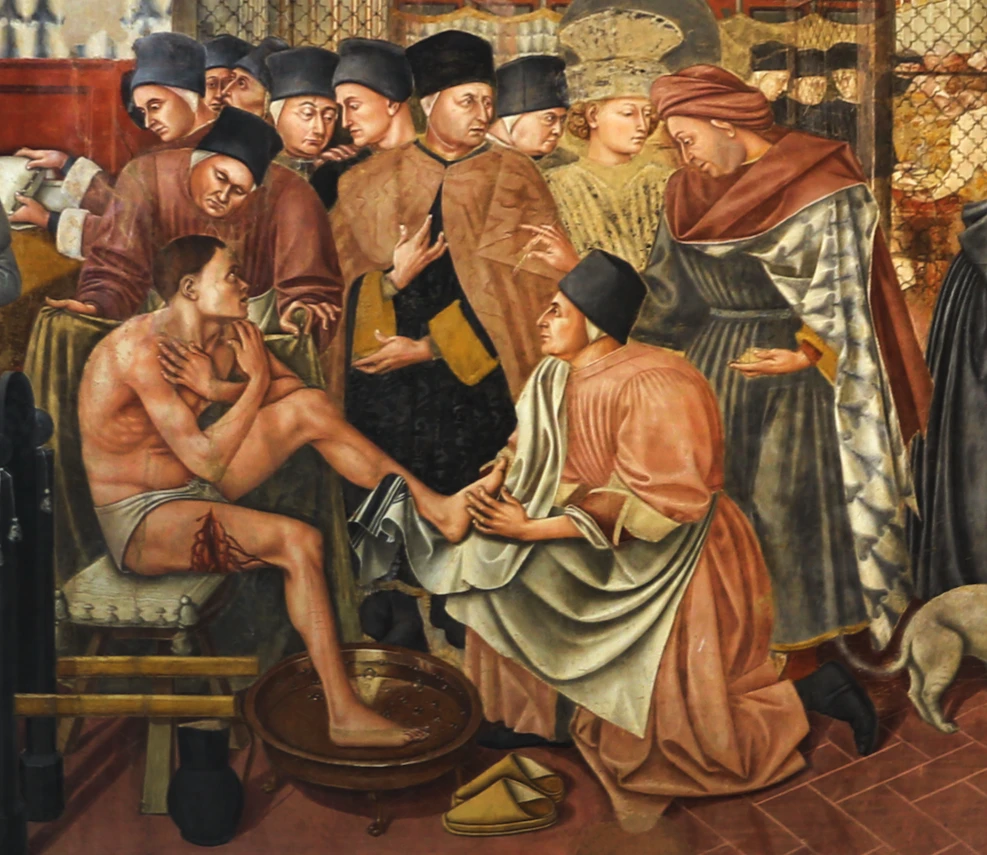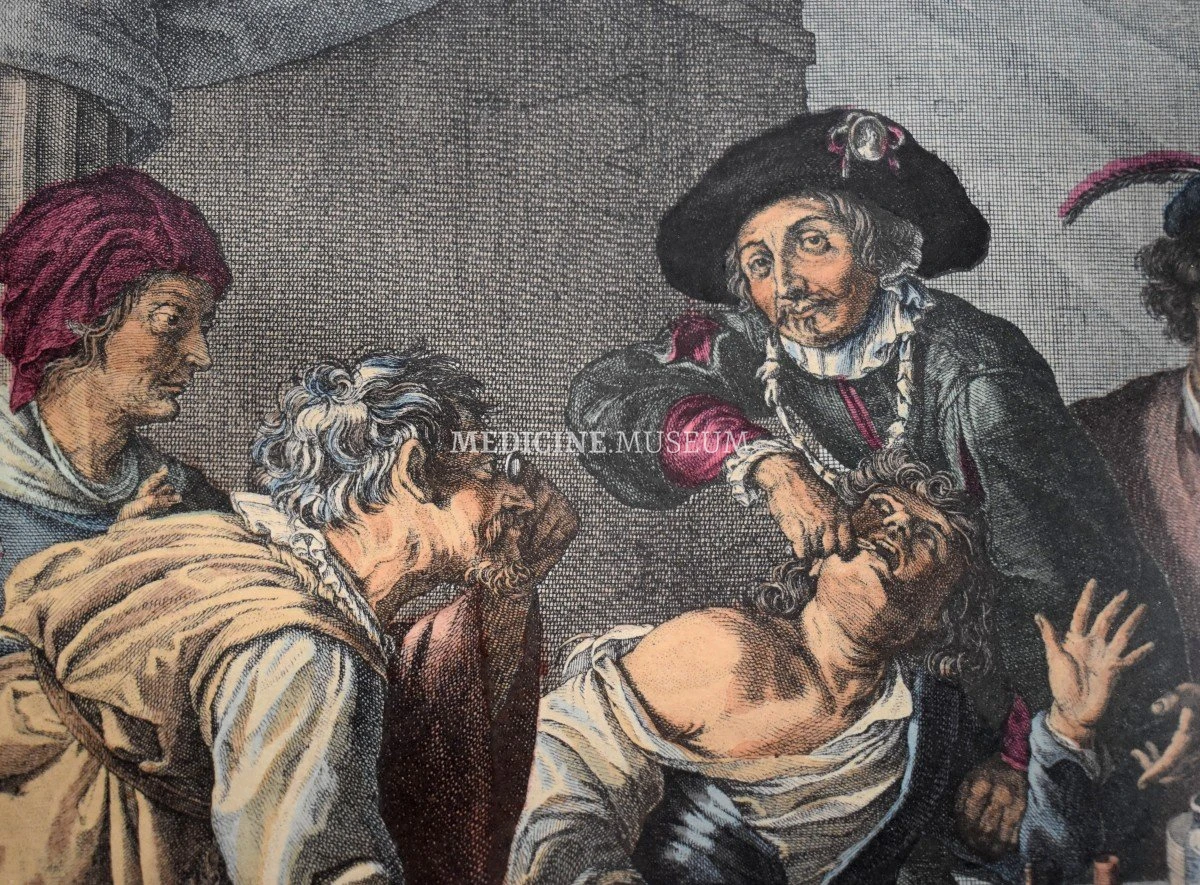Scene at the Barber-Surgeon
Scene at the Barber-Surgeon
Unknown dutch traditionalist, 19th century, genre scene: lively practice of a barber-surgeon, cutting hair and operating as a typical characterization of the common guild profession in styles of the 16th/17th century, oil on wooden panel. Size: 25,0 x 33,0, with gilden frame 34,0 x 42,0 cm.
This 19th-century painting, done in oil on wood by an unknown traditional artist, vividly shows how multifaceted the profession of barber-surgeon was — an ordinary person in European society in the 16th and 17th centuries. Barber-surgeons were some of the most accessible doctors for ordinary people, offering a wide range of services from grooming to medical treatment.
Their duties went beyond haircutting and shaving and included bloodletting, tooth extraction, wound treatment and even amputations. This dual role arose in part due to church restrictions: in 1163, Pope Alexander III forbade clergy from performing surgery, and barbers began to fill the gap in surgical care. This painting not only shows how people were treated in the past, but also gives an insight into how doctors were viewed in early modern Europe. By showing where and what a barber-surgeon did, the painting opens a window into the world of medicine, society and everyday life at a time when medicine was undergoing major changes.
